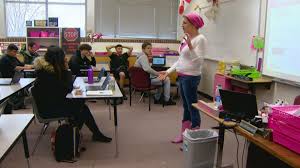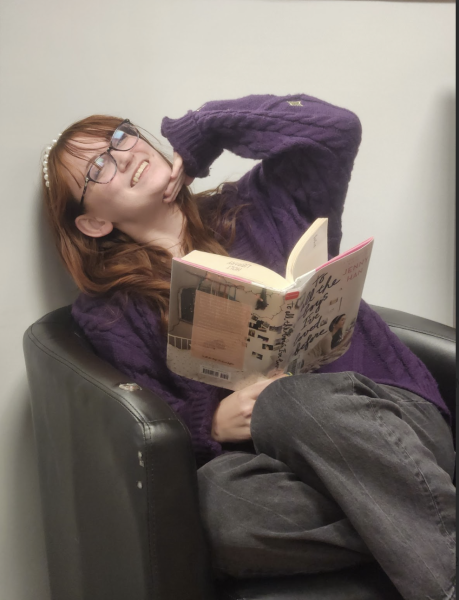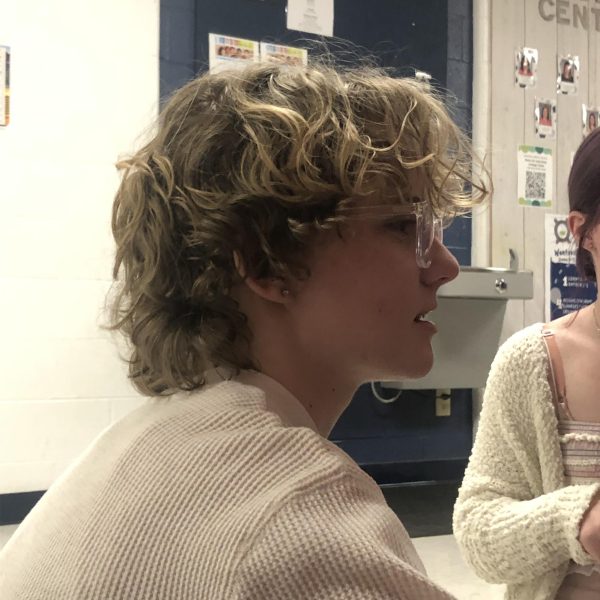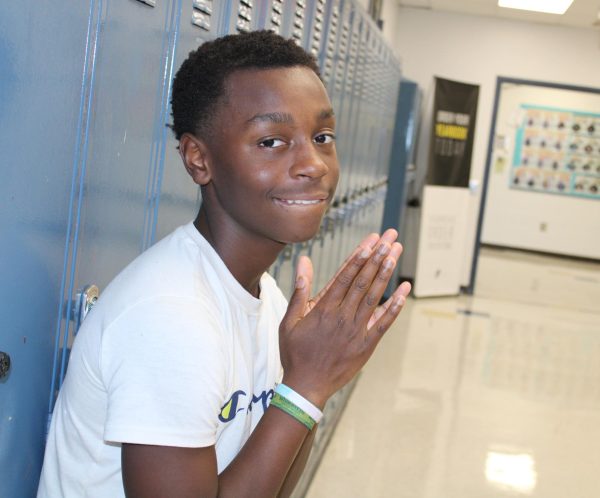Reasons Why the Wentzville School District Should Not Continue Under Level 2 Policies

The Wentzville School District recently moved to Level 2 learning, but is this decision the best approach?
Over the course of this article, my purpose is to show the school board and anybody reading this that moving to Level 2 learning is a big mistake and a huge injustice to all students, especially those in higher grades. I am also attempting to persuade the Wentzville School Board to allow a full week of in-school learning for any student who does not want their education to be impacted by these policies. I am passionate about my education and will do all that I can to make sure that it is not interrupted by a school district that, in my opinion, is not doing what is in the best interest of the students.
I would first like to say that COVID-19 (the supposed reasons for moving to Level 2 learning) is not a threat to the general population. The government looks at the rise in positive cases and decides to close down their businesses and schools because it is too dangerous for people to be there. To fully understand how little of a danger this really is, we must look at three factors. First off, we must understand that more people are being tested than ever before during this virus. Many hospitals are testing patients that did not even come in with the thought that they may test positive. It is just plain common sense that if there are more people being tested, there are likely going to be more positive cases. An increase in tests can make it look like there is a higher infection rate, but a bigger denominator often leads to a bigger numerator. The infection rate may have been the same or worse the entire time, but we just did not realize it because we did not have enough tests to be able to tell.
The second factor we need to look at is that the tests that are performed on patients are not always accurate. The antibody test is designed to find traces of coronavirus, as opposed to COVID-19 itself. A fact that many people overlook is that the common cold is a type of coronavirus. This means if a person has had a common cold within a certain amount of time before taking the test, they may test positive for the antibody test because the test is not specific to COVID-19. The CDC has also admitted to mixing data from viral and antibody tests. This is a big issue because these antibody tests are getting mixed with tests that actually show the specific virus and making it look like there is a greater number of positive cases than there actually is.
There is also a thing called presumptive positive tests of COVID-19. A presumptive positive test is a test that is supposedly positive, but has not been confirmed by the CDC. According to the CDC, these tests that lack confirmation are still being counted as positive tests. If it is not being confirmed, how can anybody be sure that the test actually happened or came back positive. Because of faulty record keeping like this, the data may be thrown off significantly and the number of cases is probably greatly inflated.
A third factor to consider about COVID-19 is that positive cases do not necessarily matter in terms of determining its potential danger. Just because the virus is widespread and has been contracted by many people does not mean it is a threat. We should instead be looking at rates of hospitalization and deaths in order to more accurately evaluate how scared of this virus we should be. If we look at the hospitalization rate on cdc.gov, we can see that most students in school (ages 5-17) have an overall hospitalization rate of 0.006 percent. This number is definitely too small to close down a district. We also have to account for the teachers. According to nces.ed.gov, the average and median ages of teachers in Missouri is about 37 to 40. The CDC reports that people ages 18 to 49 have a hospitalization rate of 0.08 percent, which is still too low to be considered a big concern. In fact, the largest hospitalization rate (ages 85 and older) is still only 0.6 percent, which is still on the wrong side of the decimal point to be a big deal.
Let us consider the number of deaths. As of August 6, there have been 144,073 deaths in the US reported by the CDC. If we divide the total death count by the total US population (331 million) we can find that the overall death rate for COVID-19 is about 0.04 percent. If we take into account that approximately 80 percent of COVID-19 deaths are people ages 65 and older (once again according to the CDC), people under the age of 65 only have a death rate of 0.008 percent. If we look at the death count in Missouri (1,150) and divide it by the total Missouri population (6.15 million) we get a Missouri death rate of 0.01 percent. Once again, a number that is merely insignificant and should not be considered a necessary factor in closing schools.
It is also important to mention that New York Governor Andrew Cuomo recently stated that schools are safe to open in New York and any area that has a positive test rate of less than five percent. Keep in mind that New York alone has had over 30,000 COVID deaths by this point. It currently holds the highest death rate of any US state. If New York even thinks it is safe to open, why are we so hesitant? Missouri only has a positivity rate (relative to total population as opposed to total conducted tests to account for possible asymptomatic victims) of about 1 percent. What is the big problem with opening our schools, too?
We must also recognize the fact that it is unlikely for children to spread the virus to others. Perhaps the best example of this is a study that was conducted in New South Wales. During the months of March and April, nine teachers and nine students officially diagnosed with COVID-19 were spread across 15 schools and every person in close contact with these people during this time was monitored. Out of a total of 863 people who came in contact with at least one of these people, only two contracted the virus. This study is more than just a coincidence. This study and many others like it have evidence to prove that children do not generally spread COVID-19 to other students or adults. So, the argument that the spread of COVID-19 in the classroom is a reason not to return to school is clearly invalid according to science.
Now let us take a look at the Wentzville School District Level 2 policies. Probably the biggest issue is with full day Chautauqua. Chautauqua is the school’s after-school program that is essentially a day care system where parents can drop their children off to be watched by staff. This comes in handy if a parent has to work and has a younger child that is not capable of taking care of themselves.
Now since in-person school only occurs two-days a week, the school recognizes that some parents still have to work and need someone to watch their children during the week. So, some schools now offer full day Chautauqua. For $408 to $444 dollars a month, parents can now send their children to school and have an adult watch them while their parent or guardian goes to work. If parents are going to send their children to the school to be watched anyway, why not throw a teacher in that classroom to educate the students? This option proves that closing schools is not about COVID at all because there is a potential to have the same amount of children at the school during that time as there would be on a regular school day.
Furthermore, if we look at the “Athletics & Activities” of the Roadmap to Reopening document, we can find that during Level 2 learning, if students are allowed to participate in sports, Level 1 learning policies will be followed. At the time of writing this document, school sports still have not been cancelled, so let’s assume that sports continue to be allowed. Under the Level 1 learning, locker rooms and weight rooms are still open in the school, of course through social distancing measures and mask wearing. According to the document, 30 people or less can be in the weight room at any given time. If 30 people can be allowed in one room for sports, why can’t 30 people be allowed in a classroom (assuming a classroom holds about 30 students on a normal school day anyway)? Why is it so inappropriate to put students in a classroom to learn, yet it is completely acceptable to have gatherings for day care programs, sports, and other activities.
We can even look at examples outside of school. Teenagers are still allowed to go to their jobs through this pandemic. Despite the current situation, certain things are still necessities. Some teens, especially those who work at restaurants, come to work, even without a mask. Why can they return to their jobs but we cannot return to school?
It seems that there is no good reason why students should not return to in-person learning. But, why is all of this really such a big deal? First off, the education levels of the students are concerned. Any student and parent remembers how uncoordinated virtual learning was last year. The fact of the matter is that during virtual learning, teachers do not have a specific time slot to fill with lessons. As a result of this, teachers spread out the lessons, make the lessons shorter, and give out a small amount of work having to do with a particular lesson. Because of all of this, students can get very far behind on education. Because of the pace that the lessons move at, the lessons likely will not be covered in totality. It put students behind to do this type of education for a quarter of the year. It would be an even bigger step backward to do this type of education for an entire year. Students in higher grades will especially be in trouble because entire grade levels will now be behind and may not be prepared for taking college prep tests and going to college.
Also, because of this setup, students who go to school for two days and students who participate in completely virtual learning will likely be separated drastically in education. This is not to say that academic success is impossible to achieve through virtual learning, but it is definitely harder considering the execution of the situation.
Let’s also focus on another very important document sent out by Dr. Cain: the Frequently Asked Questions document. A big issue lies in the “Transitional Questions” section. One of the questions listed is, “What is the threshold or the metrics that will be used to determine when the District will move from one level to another?” The answer explicitly states that there is no specific metric that determines the transition from one learning level to another. Think about it: the school board does not necessarily change levels based on numbers. Anything can be changed at any time without probable cause. Some examples of metrics considered listed in the document include rise in positive cases, rate of transmission in schools, and number of students quarantined in a particular school. We have already discussed above that the number of positive tests is being skewed and that children have a hard time transmitting the virus. How are we supposed to know if schools are likely to go Level 3 if the decision is not based on a specific number.
The Fort Zumwalt School District took a different approach. They sent out a survey and found that 88 percent of parents wanted their children to return to school and 90 percent of the staff wanted to return to work. The Fort Zumwalt School District, as a result of surveys, is allowing students and staff to return to face-to-face learning for the 20-21 school year. Just to be clear, I am not stating that the results of the survey will come back similar, I am merely suggesting a method by which the school board can make the parents and staff a part of the decision making process.
In conclusion, Level 2 learning is not only unnecessary, but also puts students at a great disadvantage. The evidence I have given throughout the article is intended to prove that Level 2 learning (along with Level 3 learning) is a big mistake with effects that may be long-term. I also would like to point out that even Level 1 policies may have too many restrictions as well, because if social distancing and masks really worked, we wouldn’t have switched to Level 2 learning in the first place. This article was my plea for my education and my thoughts about why returning to school is beneficial and entirely possible.
If you are a parent, guardian, or student reading this and you agree with my point of view, I would suggest making your own voice heard. Multiple voices are better than one. Make an article. Stage a peaceful protest outside the school. Stand up for your opinion so everyone can be represented instead of just agreeing to something we are told without further research on the matter. No matter what you believe about how learning should be done this year, your choice should be considered and respected. Each parent should have the right to make their own decision on how their child is educated.
Disclaimer: This article is the opinion of the author and does not represent the opinion of Holt or WSD.











